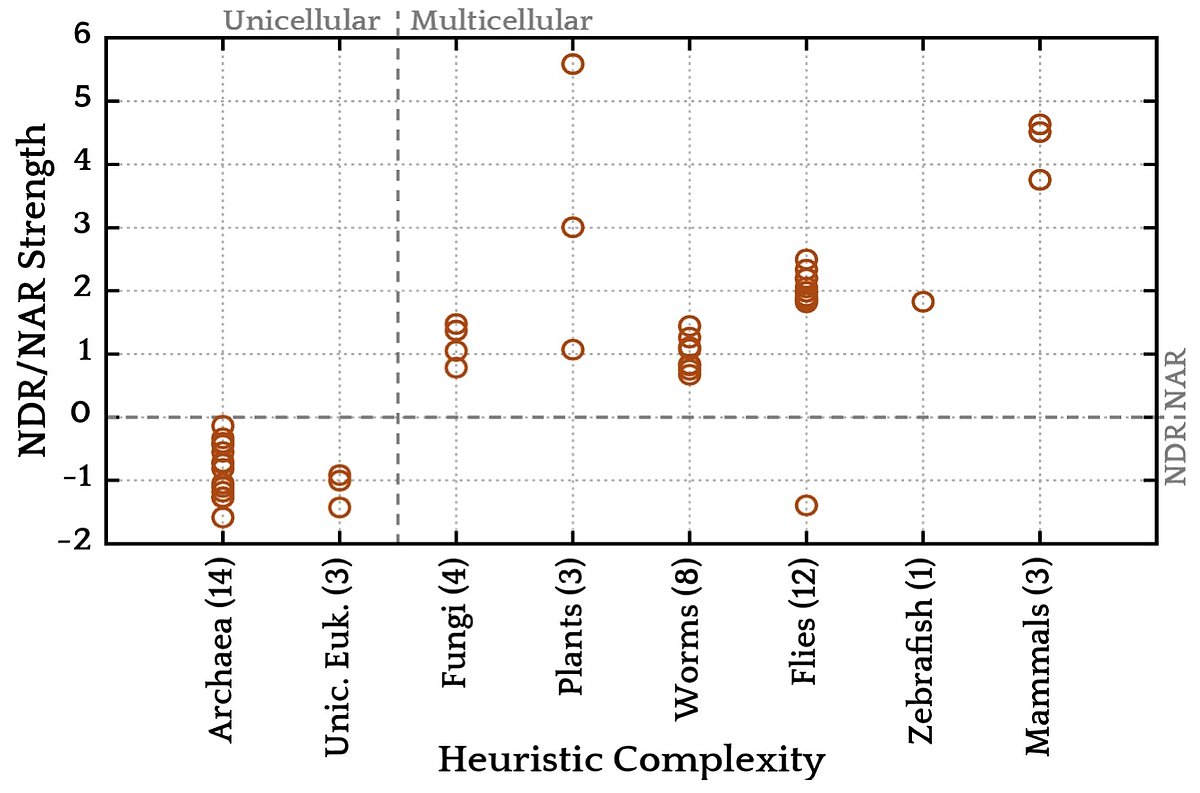Genome-Wide Studies
Markov Chain Model and Uni- vs Multicellular Organisms

Despite being heavily coarse grained our nucleosome model is much too slow to study the nucleosome energy landscape along entire genomes. However, we have achieved a 10 million times speed-up, by using our model to construct a probabilistic model, a two-step Markov process that assigns to every nucleosomal base-pair sequence a free energy cost (Tompitak 2017a; Neipel 2020).
Using this probabilistic model we looked at the genome-wide average of the nucleosome free energy landscape around transcription start sites for more than 50 genomes (Tompitak 2017b). We found a general rule that seems to apply to all living organisms: if the organism is unicellular, DNA mechanics repels nucleosomes from that region and, if it is multicellular, it attracts nucleosomes on average. The biological reason behind this distinction is probably rather complex and might involve transfer of epigentic information from fathers to offsprings.

